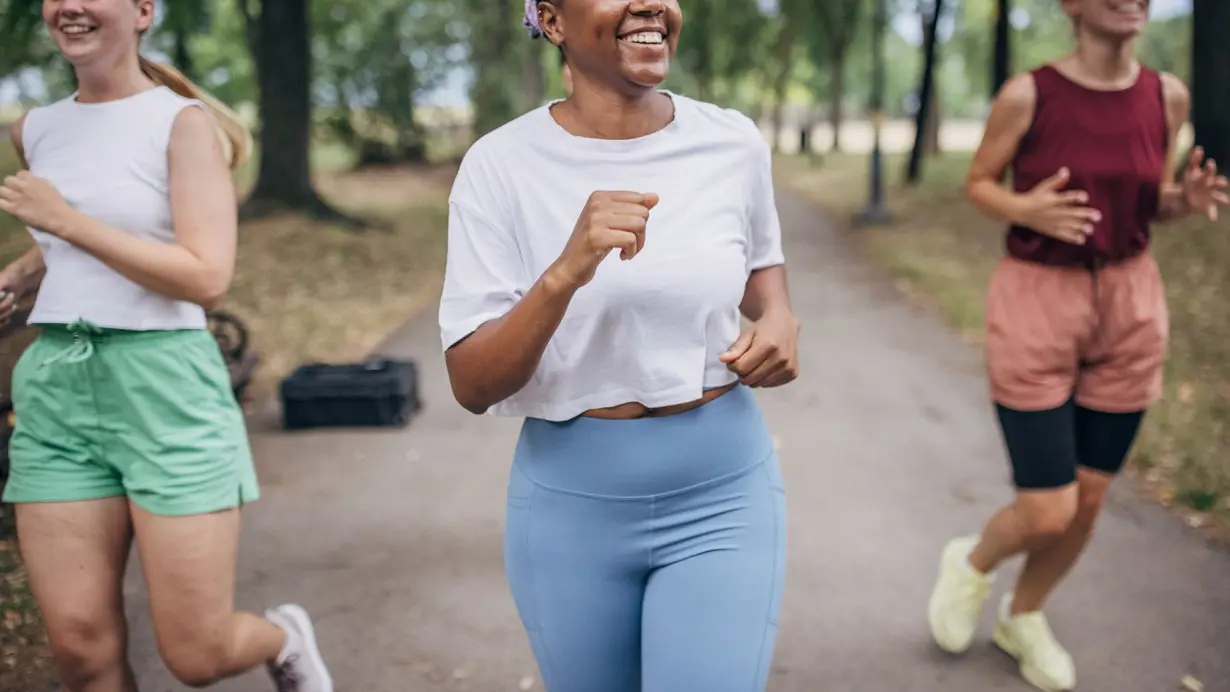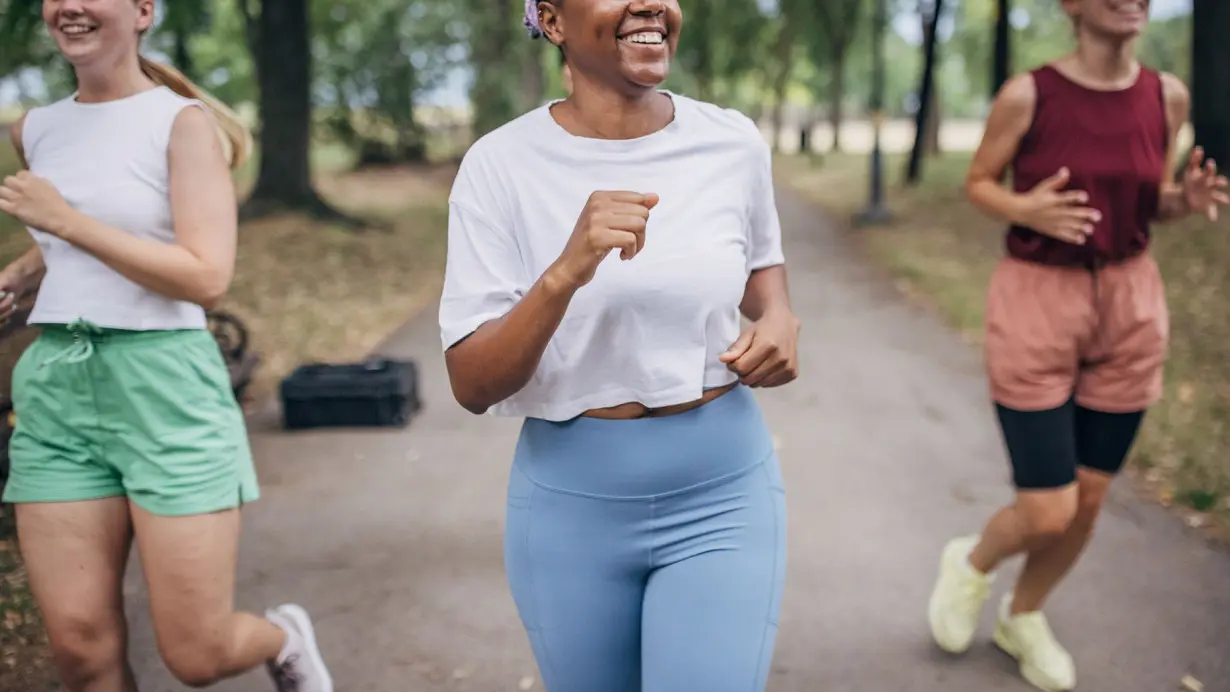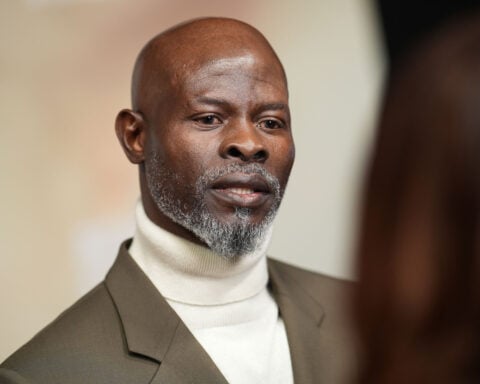(CNN) — Think back to when you were a kid and movement was instinctive — and often infused with pure joy.
Maybe it was racing your sister and dad to the front door. Or jumping on the bed with friends during a sleepover. Or playing a team sport. Or riding your bike around the park.
For many, the link between movement and joy was severed and forgotten somewhere along the road to adulthood, displaced by the realities and responsibilities of daily life. Movement might have been transformed into something more obligatory — we must do it to optimize our health or get in shape. Or it might have become too time-consuming. For some, it might even have become painful due to injury, disease or the passage of time.
But we abandon movement at our own peril and at risk of our well-being. Studies have found that movement — and its more challenging and intentional cousin, exercise — is not only beneficial for physical health but is also closely associated with mental status and mood.

“I always say that exercise is like an intravenous dose of hope,” psychologist Kelly McGonigal told CNN Chief Medical Correspondent Dr. Sanjay Gupta on his podcast Chasing Life recently. “And it’s any form of movement that you’re willing to do with any part of your body that you can still move.”
McGonigal is the author of “The Joy of Movement: How Exercise Helps Us Find Happiness, Hope, Connection, and Courage.” A group fitness instructor and a lecturer at Stanford University, she has used movement and exercise throughout her life to manage her own anxiety and depression.
McGonigal said exercise allows for the creation and release of “hope” molecules, technically called myokines, during muscle contractions — for example, when we work out or even just move around. Some of these myokines can have antidepressant effects.
“Our muscles do more than just move our bones around or stabilize our skeleton,” she said. “Our muscles are almost like endocrine organs. They manufacture these molecules that they can release into the bloodstream that then travel around and affect all of our organs. And some of them can cross the blood-brain barrier and affect your brain, including your mood and your mental health and your brain health.”
Exercise enables you to see your body as an ally, according to McGonigal.
“I think this is one of the coolest bits of the science of movement and exercise, particularly because of how it allows us to feel like our body is our friend,” she said. “It’s our partner, not something we’re trying to fix or control through movement.”
McGonigal said many other brain chemicals get released during exercise that can affect someone’s state of mind, resulting in, for example, a runner’s high, a flow state and even euphoria.
“There’s actually a lot of different kind of brain states you could experience in movement; it’s not one ‘thing,’” she said. You can listen to the full discussion here.
What can you do to tap into joy during exercise and movement? McGonigal has these five tips.
Take your workout on the road
Head out into nature.
“We know that mindful forms of movement, as well as moving outdoors in nature, tends to put the brain in a state of this heightened awareness to the present moment that feels like vitality and connection to life,” McGonigal said. “People often feel a relief from inner chatter and stress and worrying. … It’s changing which systems of the brain are most active and putting you in a state that’s like meditation.”
Pump up the volume
Queue up your favorite playlist and get moving.
“If you’re doing a workout where you’re listening to music you love that’s high energy, you’re moving to the beat, and you’re doing things that really get your heart rate up … it often is more like euphoria,” she said. “You feel incredible, and you’ve got those endorphins, and that brain chemistry also really helps you feel connected to other people.”
Join the group
Being social helps you exercise.
“Make movement social. We know that people form friendships and communities of support through movement, whether it’s strength training or running,” McGonigal said.
These days, who couldn’t use another friend or source of support?
Exercise also helps you be more social.
“People who exercise, they report being less lonely, they report having better relationships with others and — for reasons that range from the biochemical and how the brain chemistry of exercise primes you to be more social — to be able to connect with others better,” McGonigal said.
“If you are socially anxious and you exercise, by the end of that workout, you’re going to be almost like a more extroverted version of yourself.”
Get back to basics
Find something you really like doing.
“Think about positive experiences you’ve had with movement in your life,” McGonigal said. “Maybe go back to something that you miss or find a new way to do it.”
Change your mindset to one of gratitude
While you are moving, find ways to appreciate your body for being able to move, as opposed to monitoring it.
Adopt a “mindset switch of, ‘Wow, body — that was incredible!’ Or ‘Thank you, body, for having the energy to let me do this,’” McGonigal said.
We hope these five tips help you tap into joy through movement. Listen to the full episode here. And join us next week on the Chasing Life podcast when Dr. Gabor Maté speaks about how past trauma affects present-day health.
The-CNN-Wire
™ & © 2024 Cable News Network, Inc., a Warner Bros. Discovery Company. All rights reserved.

 In eyeing Greenland, Trump is echoing long-held American designs on the Arctic expanse
In eyeing Greenland, Trump is echoing long-held American designs on the Arctic expanse
 Kamala Harris memes questioning her cultural background highlight Americans’ contradictions with race
Kamala Harris memes questioning her cultural background highlight Americans’ contradictions with race
 Vulnerable Americans live in the shadow of COVID-19 as most move on
Vulnerable Americans live in the shadow of COVID-19 as most move on
 78 dead at abandoned South Africa gold mine that was scene of a standoff. Toll is expected to rise
78 dead at abandoned South Africa gold mine that was scene of a standoff. Toll is expected to rise
 Poland's leader accuses Russia of planning acts of terror against 'airlines over the world'
Poland's leader accuses Russia of planning acts of terror against 'airlines over the world'
 Universities are mapping where local news outlets are still thriving − and where gaps persist
Universities are mapping where local news outlets are still thriving − and where gaps persist
 China blacklists four U.S. companies for involvement in arms sales to Taiwan
China blacklists four U.S. companies for involvement in arms sales to Taiwan
 Wildfires latest: A final round of dangerous fire weather and dry conditions is in the forecast
Wildfires latest: A final round of dangerous fire weather and dry conditions is in the forecast
 Music streams hit nearly 5 trillion in 2024. Women pop performers lead the charge in the US
Music streams hit nearly 5 trillion in 2024. Women pop performers lead the charge in the US








